Agriculture IoT Solutions and Cloud Connectivity
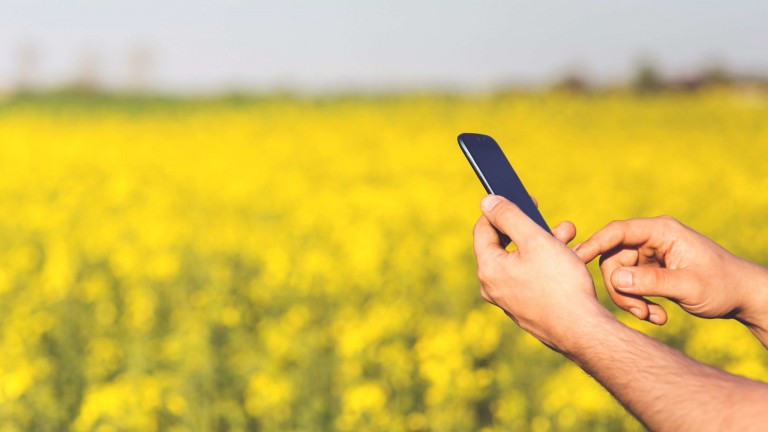
Agriculture IoT Solutions and Cloud Connectivity

IoT technology is being applied, to great success, in every vertical imaginable. With the global IoT market expecting to grow from $157B in 2016 to $457B in 2020, there is no shortage of people and businesses experimenting with the disruptive technology.
IoT is often used to enable a heightened levels of monitoring, analytics, production and optimization that is often automated and self-correcting. This makes IoT a useful resource for any industry or user that wishes to improve their processes.
IoT can be integrated and applied in multiple ways to provide various benefits, depending on the systemic issues and needs of the industry at hand.
From energy to manufacturing to agriculture, we’re seeing IoT solve age-old problems by facilitating the connection and collaboration of electronic devices that work to optimize task completion while reducing unnecessary waste and costs.
More than 80% of companies that adopt IoT technology in their operations report improved efficiency. For the most part, these results stem from a reduction in maintenance costs and times; an essential part of most business operations.
In these scenarios, and many others, IoT technology is often used in tandem with cloud-based services. From its inception, the cloud worked to take the heavy load of any operations on a given network.
Rather than requiring a computer with premium specifications, including RAM and processing power, you can rely on the cloud to shoulder some of the operating requirements by spreading it among multiple computers. Plus, utilizing the cloud allows companies to scale operations, all while handling any fluctuations in processing load with relative ease.
Best of all, if one computer crashes, the cloud doesn’t go down with it. Cloud technology is built upon the premise that networks can easily be destroyed and replaced at the same time.
The cloud doesn’t rely on a single server to be failure-proof. Instead, it has an “assembly line” of replacements that can take over at a moment’s notice.
IoT and cloud-based services are the perfect pair because they essentially accomplish the same task: optimizing processes while reducing unnecessary cost or waste.
Plus, IoT and cloud-based services have been built on a foundation of affordable hardware and processing power. With a low barrier to entry, anyone and everyone can experiment with IoT and cloud technology, shaping it to fit their specific needs as a business.
IoT and Smart Agriculture
“Smart agriculture” improves crop productivity and addresses agriculture-specific issues like food demand, land management, and resource depletion. Because of this, the smart agriculture industry is forecasted to reach a market value of $26.8B by 2020.
Smart agriculture relies on IoT-connected devices to make farms more efficient, effective and intelligent. And to meet a growing food demand amongst extreme weather and environmental interference, the agriculture industry needs to be connected with IoT in order to succeed.
If a farmer needs a better way to handle his or her crops, an IoT system can be used to monitor the land with sensors that record temperature, light and moisture among others.
Many of these sensors run on solar energy and are extremely energy-efficient. This reduces the maintenance costs of these devices, and saves farmers from having to frequently replace batteries.
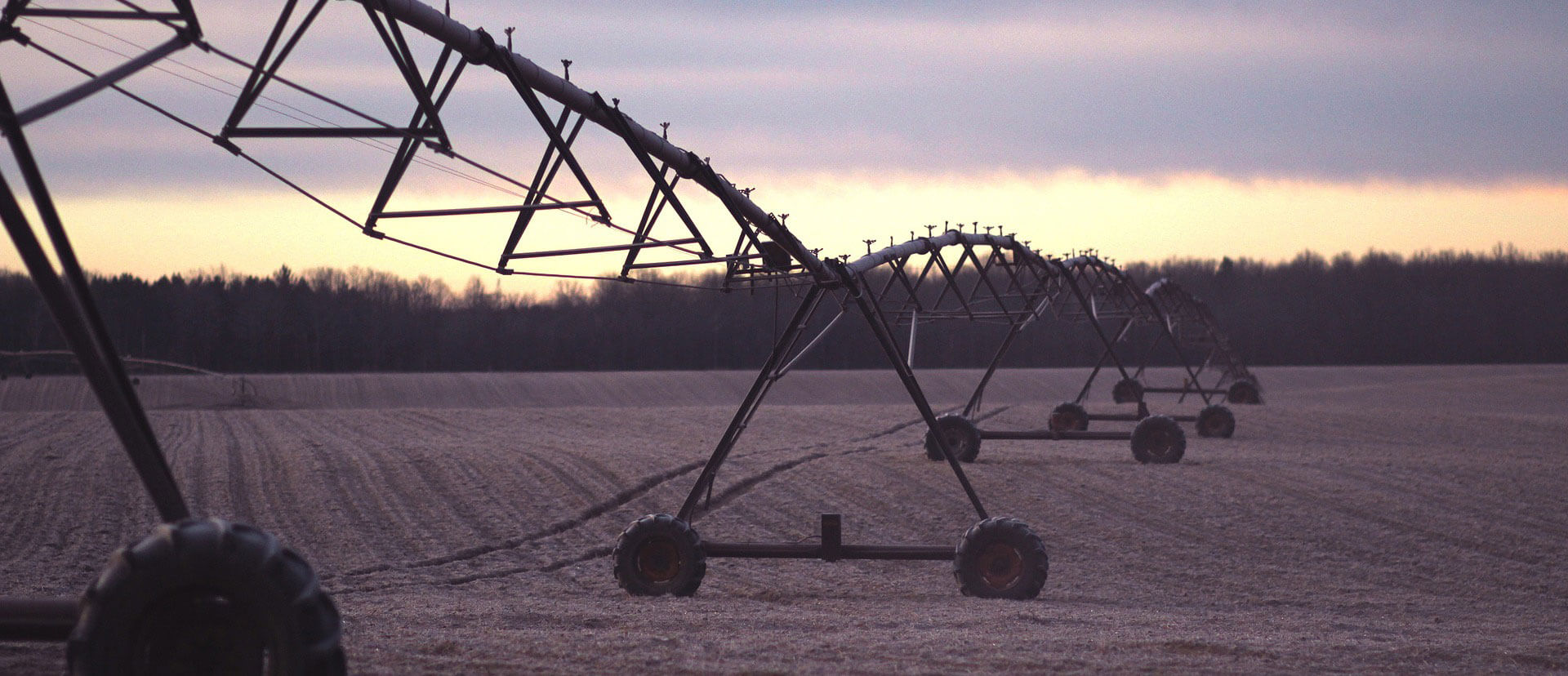
IoT can even automate the irrigation system that farmers use, based on the sensor data collected by the IoT-connected devices.
As IoT and cloud technology continue to progress, agriculture is becoming more like manufacturing.
A farmer’s day will consist of monitoring crops using IoT sensors and surveillance networks rather than a physical examination.
IoT technology essentially removes the guesswork and inaccuracy of traditional farming methods by providing an intelligent and efficient alternative method. And because of this, farmers save time and money that could be better used elsewhere.
The benefits of smart agriculture and IoT farming are significant. They apply to local farmers as well as to larger farming operations: efficient water usage, optimal production, and lower costs among others.
When it comes to smart technology in the agriculture industry, some nations are more developed than others.
Taiwan has become a global leader in IoT and cloud technology, particularly in the agriculture industry. In fact, some are projecting Taiwan will become the world’s largest food producer in the near future.
This is an incredible feat, considering Taiwan is a small island (relative to the mega farms seen in Canada and the US), and can be prone to extreme weather.
What has led Taiwan to becoming a pioneer in the agriculture industry is its adaptation of smart farming.
Ample land and ideal topography are no longer a strict requirement for agriculture. Multi-story hydroponic farms produce mass amounts of food without using nearly as much space as traditional methods.
Plus, IoT, robotics and other technological innovations have enabled agriculture to be less lenient on intensive human labor.
Lin Tsung-hsien, Chairman of the Executive Yuan’s Council of Agriculture describes how IoT technology can be used to improve agriculture.
“Unmanned aircraft will fly over fields to monitor crop growth and transmit data to the cloud for analysis of the use of pesticides and fertiliser as well as water resources with results of the analysis lowering costs and minimising impact to the environment.”
“All their farmers need to do is to connect to the cloud using a cell phone or tablet.”
Save Time and Money in the Agriculture Industry with IoT Technology
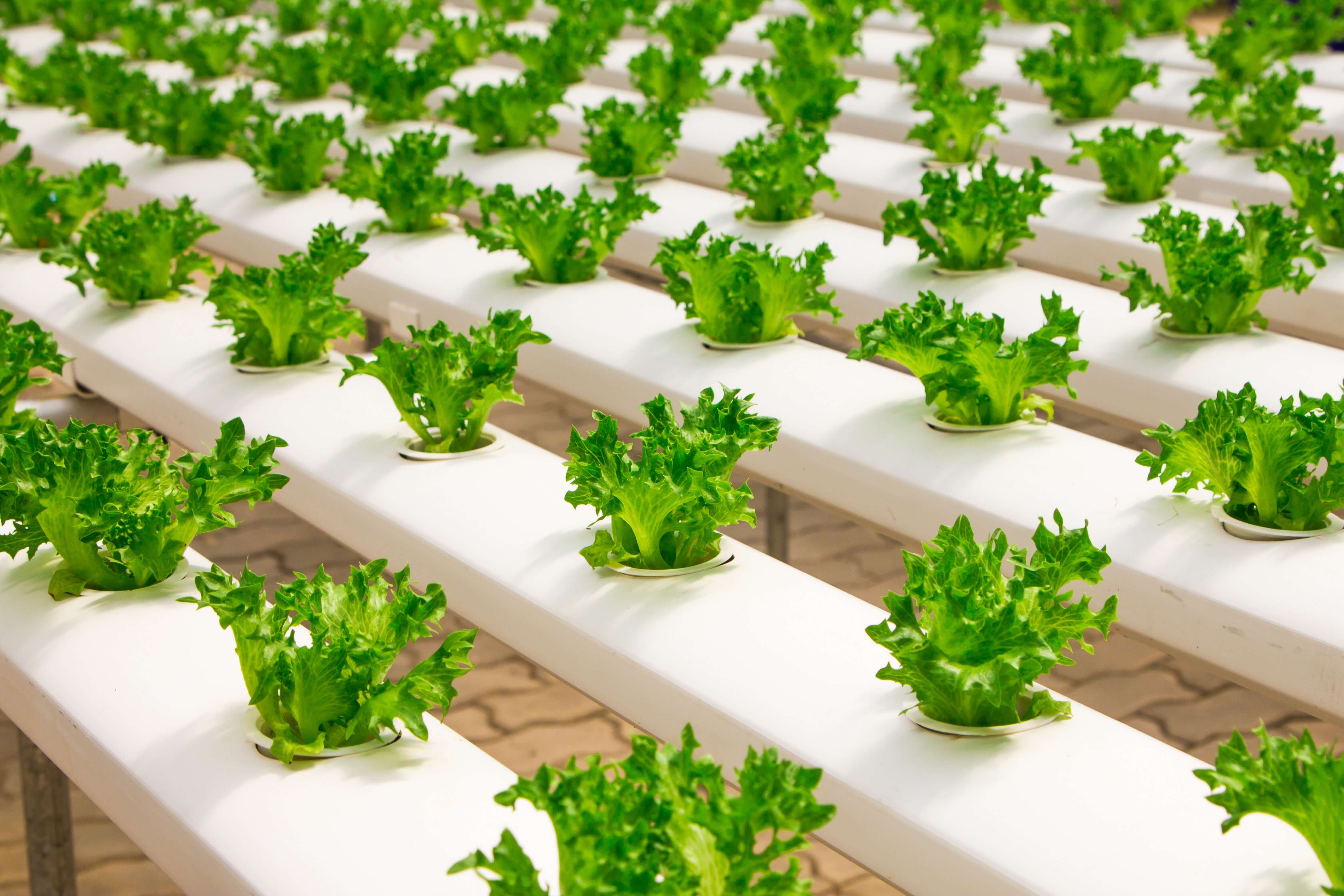
We’re seeing IoT employed to great success all across the agriculture industry.
IoT-connected devices and hydroponics are saving farmers millions of gallons of water.
Water meter sensors ensure that a crop only gets as much water as it needs, and recycles the rest for future use. This water conservation helps farms grow while limiting the cost to their wallet, and to the environment.
Plus, using less water enables countries that are prone to droughts to practice agriculture that is reliable and fruitful.
And since hydroponics doesn’t require soil, farms based in countries with poor soil quality can grow their own food as well.
LED lighting on farms can also be automated with IoT technology. Tuning the lighting system so that it’s only used for the purpose of photosynthesis can optimize a farm’s operations, saving them money while improving their crop production.
For instance, if a certain crop’s peak growth requires 18 hours of direct sunlight every day, a lighting system can be programmed to fill that need.
Plus, the LED lights don’t have to follow the same schedule as the sun. That means using the energy on off-peak hours so farmers can save even more money with their operations.
Similar to the impact of hydroponics and IoT sensors, automated LED lighting enables countries and companies that lack resources (financial or natural) to practice agriculture with a low barrier to entry.
Areas that have limited sunlight can rely on these lights to initiate photosynthesis.
Plus, depending on budget as well as energy costs, these optimized lighting systems can make or break a project’s success rate.
Another great use of IoT can be found in the aviary industry, where beekeepers have been fighting to save the bees for years.
Scientists are still trying to understand what they’ve named the Colony Collapse Disorder (CCD), which has destroyed an estimated 10 million beehives over the last six years.
Although pesticides aren’t entirely to blame, they certainly hurt the health and well-being of the world’s bee population.
Traditionally, monitoring a beehive is a difficult task. Beekeepers have to physically open the hive and check on the queen, her eggs and the number of bees, not to mention the traumatizing effect that opening the hive has on the production and well-being of a bee colony.
This is why Marc-André Roberge created Nectar, an IoT sensor device that helps beekeepers remotely monitor the health and production of their beehives.
The sensor is placed inside of the beehive and captures data on a hive’s humidity, temperature, sound, vibrations, geolocation and weight. And since these sensors use Bluetooth connectivity, they won’t harm the bees.
Every hour, this information is retransmitted to a nearby gateway before being sent to the cloud.
Nectar parses through all of the information that it has collected and formats it into a dashboard that beekeepers can remotely monitor for any anomalies that need to be addressed.
With this data, they can know if a queen is hatching, if there are any parasites present or if the bees are about to swarm (colony splits to form a new hive).
According to Roberge, adding these IoT sensors allow farmers to “cut down on operating costs, lose fewer hives and raise revenue in terms of honey production and pollination contracts.”
The impact of the Nectar sensors stretch farther than helping beekeepers monitor their hives. It speaks to the potential of IoT technology in the industry.
Similar sensors and other connected devices could be used to monitor all pollination activity, improving the lives of pollinators while ensuring the resultive consumer products are safe.
There are countless other IoT use cases that can be found across the agriculture industry.
IoT Technology Optimizes Wineries and other Smart Farms
Winemaking is another vertical that is looking to further integrate IoT technology into their fields. Not only does IoT reduce costs, improve production and streamline operations, but it also supplies growers with the data they need to predict and forecast future crop yields.
A Swedish telecommunications company is currently carrying out a trial in Germany to demonstrate how wine growers could use IoT-connected sensors in their vineyards to collect important data concerning their grapes.
Their project consists of 5 IoT gateways connected to 20 solar-powered sensors, which are placed throughout each vineyard. These IoT sensors collect information on air humidity, soil humidity and solar intensity, all having significant impact on the growth of the grapes.
With this information, wine growers can perform predictive analysis on their crops. The sensors can determine what the best time of day is for growth, what area of the vineyard is receiving the most water, where fungicides and pesticides need to be used, and more.
IoT Technology Enables Intelligent Precision Farming
IoT has created the idea of precision farming, a method that uses analytics from a collection of connected devices to grow more food with less production cost and waste.
Precision farming uses sensors, control systems, robotics, positioning systems and autonomous vehicles to collect data on specific crop requirements and variables.
With this technology, automated tractors can map fields with pinpoint accuracy, all without human input. This saves farmers from wasting unnecessary fuel or fertilizer, while giving them more time to accomplish other tasks.
The application of IoT-connected sensors allows farmers to know, rather than estimate, if their crops need more nutrients or water. This improves their efficiency while reducing the potential waste of resources like water, fertilizer and pesticides.
Factors that farmers worried about but had no control over, such as soil, weather, and vegetation, can now be tracked and monitored using IoT-connected sensors that relay collected data back to the cloud for interpretation and analysis, leaving them with more control over the success rate and production of their crop yields.
Precision farming limits waste and optimizes production for farmers everywhere, and can make a significant difference in soil preparation, seeding, crop management and harvesting, instilling intelligence in all four steps of the crop growth cycle.
Over the last decade, precision farming has grown in popularity and proficiency alongside the development of technology. Today, more than 70% of farm equipment is built with precision farming capabilities.
IoT Technology Improves Livestock Management
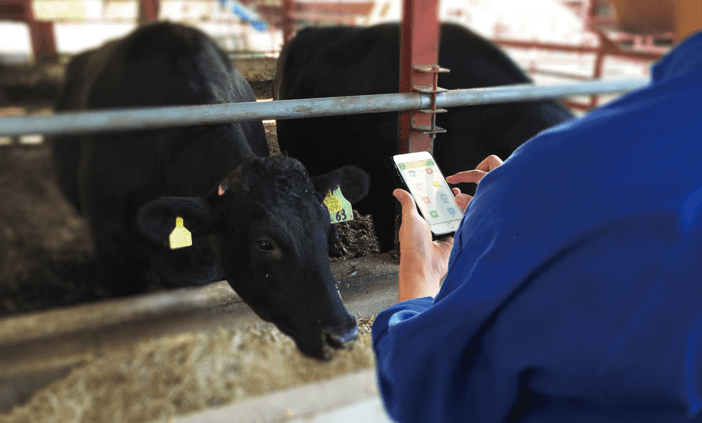
Each year, farmers lose mass profit due to animal illnesses and death. IoT-connected devices can predict and prevent livestock illness and injury, providing farmers with the information that they need to optimize their livestock management.
Connected sensors in livestock wearables can monitor heart rate, blood pressure, respiratory rate, and other vitals. This information is streamed to the cloud for farmers to analyze and use before a herd’s health is jeopardized.
IoT-connected sensors can also help keep track of a farmer’s livestock. This helps keep track of livestock so they don’t go missing, and helps to optimize grazing patterns by knowing where livestock choose to eat.
Livestock illness remains one of the largest problems that farmers have to deal with on a daily basis. Like a poorly-developed crop, sick livestock can hurt a farm’s production.
Since livestock can’t necessarily voice their own health concerns, farmers are responsible for gauging when their livestock needs treatment.
Farmnote is a technology startup that offers “smart farm” solutions to these age-old agriculture issues. Their IoT project, Farmnote Color, involves attaching sensors to the heads of livestock to track their activity.
This data collected by Farmnote Color is paired with clinical data on the cloud, and artificial intelligence is then used to hypothesize the status of each individual animal.
Farmnote Color notifies clients with alerts on livestock updates in real time, creating a livestock management system that is remotely accessible from a computer, tablet or smartphone.
One of the initial problems that Farmnote had with Farmnote Color was that telecommunications infrastructure varied in different agricultural regions.
Since Farmnote Color relies on Bluetooth connectivity for its sensor devices and gateway, it was important that they found connectivity that could consistently perform across a wide area.
Farmnote trusted Soracom to fulfil their IoT project demands, as Soracom Air enables consistent mobile communications across wide areas at a low cost.
Every Farmnote client has a Farmnote Air Gateway installed in their barn, which collects the sensor data and feeds it to the cloud.
Soracom Air enabled Farmnote Color devices to consistently connect and integrate with the Farmnote Air Gateway and with the cloud — even across vast farmlands.
Farmnote also benefited from Soracom’s user console, which enables clients to remotely control and monitor each individual Soracom IoT SIM card. The ability to start, stop or check the status of individual connections is a unique and convenient feature of Farmnote clients.
Soracom’s pricing structure made sense for Farmnote and its clients. Soracom charges for data used, rather than paying for a set volume of data like other SIM carriers.
With Soracom, clients pay for what they use, saving them significant costs. Soracom’s pricing offers clients with a solution that is sustainable and scalable.
In the future, Farmnote is interested in Soracom’s low power wide area network initiative for their clients.
Adopting this type of connectivity would improve the connection range of Farmnote’s sensors while reducing the costs associated with installing a gateway in each client’s barn.
Farmers can Predict the Future with IoT Technology
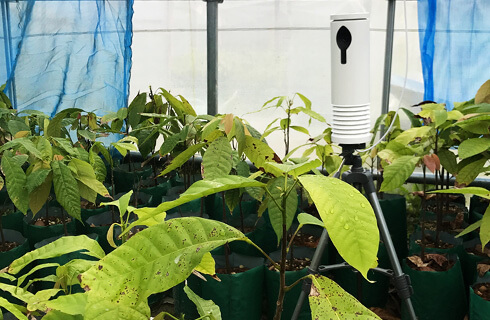 Weather has always had a tremendous impact on agriculture. For farmers, relying on inaccurate weather forecasts means taking a risk that could prove disastrous for crop yield.
Weather has always had a tremendous impact on agriculture. For farmers, relying on inaccurate weather forecasts means taking a risk that could prove disastrous for crop yield.
Weather monitoring through IoT-connected devices helps farmers save money, improve crop production, and prevent over or underwatering.
With IoT-connected devices, you can remotely and consistently monitor rainfall, which can determine how much water your crop requires. It enables you to track wind speed and direction, which can predict incoming storms. Plus humidity, a way to measure the potential for pests, can be determined all through using IoT.
Kakaxi has developed a solar-powered smart farm monitoring device that tracks temperature, humidity, rainfall, plant growth and hours of sunlight.
Using an ultra-wide camera, the Kakaxi device captures and broadcasts a time-lapse video of plant and food growth so farmers can remotely monitor their crop progress.
The Kakaxi device uses IoT-connected sensors to collect data, and uploads it via 3G cellular connectivity to the cloud, where it can be accessed with a smartphone or computer.
Kakaxi’s Farmer Dashboard visualizes the data collected by the IoT-connected devices using clear graphs that are easy to understand.
Best of all, the Kakaxi device is easy to install and even easier to manage. Simply open the Kakaxi device and place it in a field, and it will begin collecting and recording data.
The Kakaxi device is a quality IoT device that can improve crop yield for little cost and maintenance compared to other farmland monitoring devices.
It provides the strong connectivity, operational performance and low costs that are to be expected of Soracom-certified devices.
Keep your Farm Safe with IoT Technology
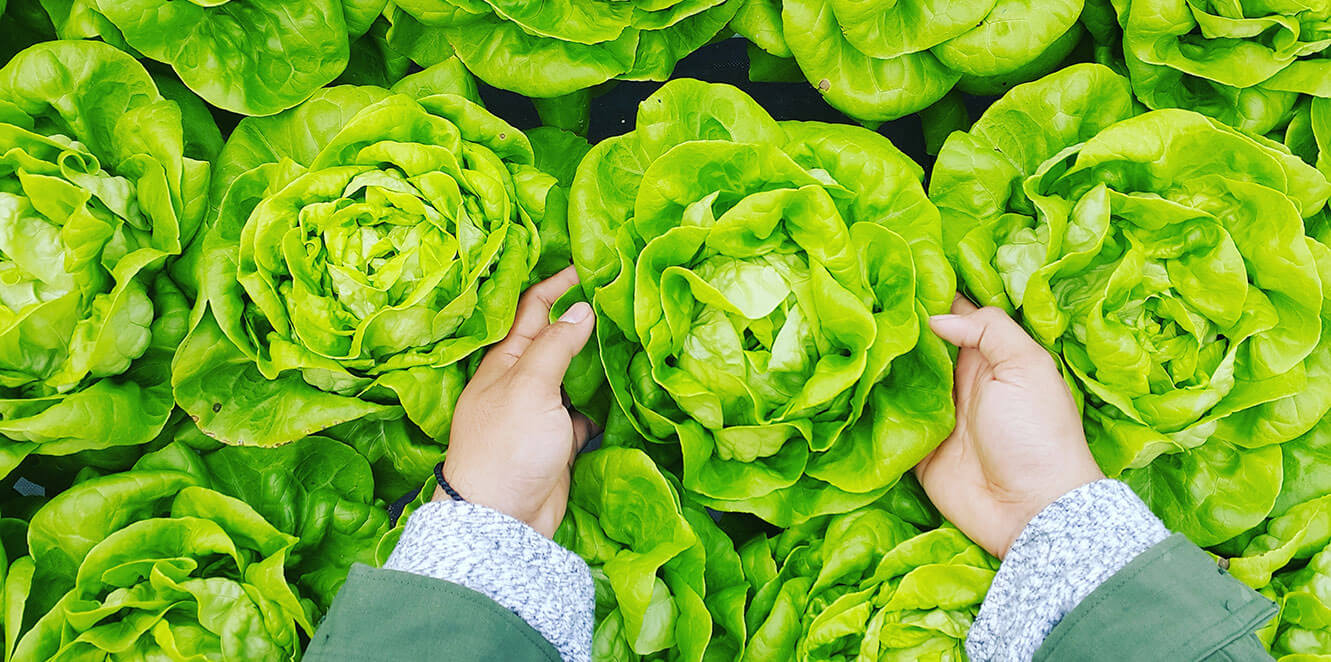
Remote management and monitoring is one of the best tools that IoT projects can provide to any business or industry. The ability to access information and analytics instantaneously from anywhere in the world saves significant time and money.
Aroba Inc. has created a network surveillance system that can utilize cameras from different manufacturers, and amalgamate them into a singular intelligent system.
Since its release in 2005, Aroba’s network surveillance system has been used in multiple industries, including retail, energy and agriculture, and are a consistent leader in the industry.
One of the hurdles that Aroba faced was the steep cost that comes with installing a network in areas where clients didn’t have the necessary infrastructure. In some situations, it was, in fact, impossible to build the infrastructure that was needed to support Aroba’s product.
A potential solution for Aroba was to rely on cellular connectivity for their IoT project. A cellular connection wouldn’t require clients to have the necessary network infrastructure, plus it could come at a lower cost than other connectivity options.
However, Aroba needed secure connectivity that is consistent and reliable for their clients, without the enormous price tag. Aroba solved their problem by using Soracom’s services to keep their project cost-effective, secure and easily accessible.
Since Aroba’s clients would rarely be accessing the video footage from their surveillance network around the clock, Aroba used Soracom Air’s RESTful API to toggle video bandwidth speed in real time.
When Aroba’s clients accessed their surveillance system, the video footage would be toggled up to high bandwidth. When they didn’t, it’d be set to low bandwidth to cut unnecessary data costs.
Another way that Soracom cut costs for Aroba was with Soracom Gate, their secure service that provides LAN connections between IoT devices that are connected to Soracom Air.
Soracom Gate allowed Aroba to bypass the cost and security risk of using a global IP address or dynamic DNS service for the router in their cameras. With Soracom Gate, Aroba’s clients can remotely manage and access their surveillance system at a lower cost than competitors.
How Soracom Provides IoT Solutions
Connectivity is a crucial part of any IoT project. That’s why it’s important that you find a connectivity solution that is quick, secure and cost-effective.
Soracom enables the creation of IoT systems that are reliable, consistent and easily accessible.
Clients can remotely manage and monitor their IoT connected devices from anywhere using Soracom’s intuitive user console.
And with Soracom’s pay-as-you-use pricing model, IoT projects don’t have to break the bank. While other carriers are charging set data volumes, leaving businesses paying for data they’ll never use, Soracom ensures that you pay only for the data you use.
No matter the IoT project, Soracom can help you control your IoT-connected devices with reliable and secure connectivity, along with tools and resources that can help you build something that is truly special.
Soracom doesn’t just want to fuel your IoT project, we want to learn more about it.
Join Soracom’s Partner Space for technical support on Soracom’s platform and devices.






